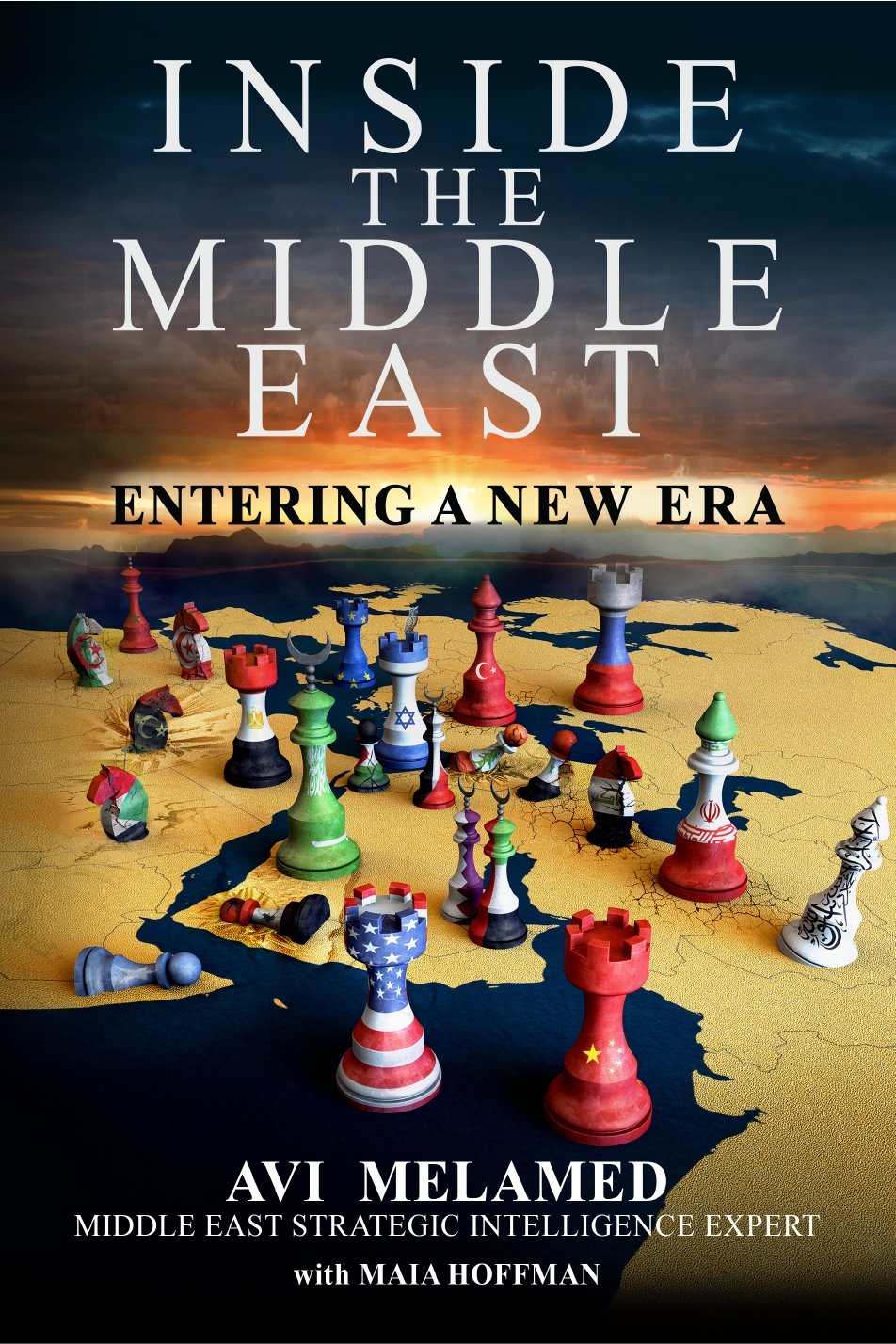|
Getting your Trinity Audio player ready...
|
The Iranian Dance of the Veils
In October 2011 the US administration announced that it had successfully intercepted an Iranian terror plot to assassinate the Saudi Arabian Ambassador to the US in Washington DC and to attack the Embassies of Israel and Saudi Arabia in the United States as well as in Argentina.
The involvement of the Iranian regime in terrorist schemes is not new. To learn more please read an article I published in 2009 – “Masters of Chaos: The Iranian Mullah Regime.”
The recent alleged Iranian plot is keeping the media, analysts and intelligence agencies very busy.
One major question asked often these days in Arab media is: Is it true or was it American spin aimed to set the groundwork for an American military strike on Iranian nuclear facilities?
Many Arab writers think that the story was indeed American spin. To support that argument, they cite the case of the invasion of the US and its allies of Iraq. An act that was justified by Iraq’s refusal to disarm itself from weapons of mass destruction, that according to the US and its allies Saddam Hussein allegedly possessed. Such weapons were never found.
These writers and others, who hold similar opinions, also claim that it makes no sense for Iran, known for its well-calculated and sophisticated policy, to be involved in such an act that has the potential to be much more destructive than constructive to Iranian interests.
Others Arab writers, however, express a different opinion. They believe that there was an Iranian plot. To support their thesis, they remind us of the fact that the Iranian regime executed many terror attacks in different parts of the world – including assassinating political figures and opponents of the Iranian regime. Some of these writers think that the attack – had it been executed – was planned to be presented as Al-Qaida’s revenge for the killing of its leader Osama Bin Laden and the radical Islamic senior activist in Yemen, Anwar al-Awlaki.
I also came across one Arab journalist who claims that the Iranian attempt was a calculated Iranian provocation aimed to result in a small-scale American military retaliation. According to the writer, the Iranians view the US as a declining power that has neither the willingness nor the resources required to conduct a large-scale military operation against Iran. Therefore, the Iranian regime assumes that a limited American military retaliation will have little impact on Iran and it will leave Iran standing as the winner thus paving the way for the completion of the Iranian military nuclear program and the rise of Iran as the dominant regional superpower.
One theory offered by an Iranian researcher at the Washington Institute for Middle East Policy particularly captured my attention because it was different than all other analysis I had come across in the Arab media.
He thinks there was indeed an Iranian plot. However, in his view, it is connected to the inner power struggle within the Iranian regime. He suggests that the action was planned by the Iranian Revolutionary Guards, possibly without the knowledge of Iran’s supreme leader, Ali Khamenei. The real purpose of the plot, in his mind, was to hurt the Iranian President, Mahmoud Ahmadinejad.
I was intrigued by his theory, and began to think it through.
Here is how I analyzed his thesis:
Shortly before the June 2009 elections in Iran, the leader of Hezbollah in Lebanon, Hassan Nasrallah made a speech in a closed forum. In this speech he expressed the expected gratitude to Hezbollah’s sponsor, the Iranian regime. However, he then added a strange remark.
He said: “The Islamic revolution in Iran was, to a certain extent, an Arab revolution.”
To understand the context of his comment, allow me to add some background:
The majority of the Arabs are Sunni Muslims.
The history of the relationship between Sunni Muslims and Shiite Muslims is primarily characterized by mutual animosity and bloodshed.
The Islamic revolution in Iran was primarily led and carried out by the Shiites.
The relations between Arabs and Persians throughout history are not so different from the relationship of the Sunnis and the Shiites.
In the generation following the Islamic Revolution in Iran, the animosity between the sides is deepening. The majority of Arabs today loathe the current Iranian regime.
We can see from above that Hassan Nasrallah has a serious problem. He is a Lebanese Arab Shiite. He is neither Iranian nor Persian. And most of the Arabs view him as a servant of the Iranian regime.
It’s possible that his strange remark was aimed to improve his image in the eyes of the Arabs.
How does this story relate to the Iranian plot?
It seems that Nasrallah’s speech was brought to the attention of his patrons – the Iranian regime – only a year later. The explanation for the delay was that the Persian translation of Nasrallah’s speech was somehow lost. Thus, the Iranians only learned about the speech in the middle of 2010.
At the same time, in the middle of 2010, the power struggle inside the Iranian regime was no longer a secret.
The struggle is between the camp of President Ahmadinejad and the camp of the Mullahs (the Shiite clergy), and mostly the ultra-conservative Mullahs.
What is the background of that struggle?
Reports indicate that over the last two years, the Iranian President is creating an interesting narrative in his formal appearances inside Iran.
He is publicly emphasizing the Persian and Pagan history of Iran, while diminish its Muslim identity.
Why is he doing this?
One explanation is that he’s trying to distance himself from the Mullahs because he is aware of the strong feelings of resentment most Iranians have towards the Mullahs who try to impose their ultra-conservative belief upon every aspect of everyday life.
Ahmadinejad’s rhetoric is aggravating the Mullahs.
They view him as a potential threat to the future of the Islamic Revolution.
One of these Mullahs is very important – Ayatollah (the meaning of the term is “A Divine Sign“) Mohammad-Taqi Mesbah-Yazdi, the highest ranking individual within the Shiite clergy, and an admired figure in Iran. He belongs to the generation of Ayatollah Ruhollah Khomeini, the leader of the Islamic Revolution in Iran and he is the head of the Institute for the study of Khomeini’s Legacy.
In addition, Ayatollah Mesbah-Yazdi is also the head of a very elite ultra-radical Mullah group known as “The Jamkaran Group” that operates out of the Jamkaran Mosque next to the city of Qom. According to the Shiite belief, this is the place where the last Shiite spiritual leader in a chain of twelve spiritual leaders, called Imams was seen before he disappeared. In the Shiite belief, this Imam, known as “The Disappearing Imam” will come back to lead the world as Mahdi – the Messiah in the Shiite terminology.
Ayatollah Mesbah-Yazdi also lectures occasionally to the senior command of the Iranian Revolutionary Guards. In these appearances he presents his radical views which include a deep animosity towards Jews, Christians, the West and Israel.
In 2005 Mesbah-Yazdi published a book in which he urged the Iranian regime to possess a “certain kind of a weapon.” Though not mentioned, it is quite clear what kind of weapon he was referring to. The book was published in a limited edition of 3000 copies.
What’s interesting to note is that Ayatollah Mesbah-Yazdi was also the spiritual mentor of President Ahmadinejad. Yet, their close connection came to an end once the Iranian president began propagating this new line. Now their close relationship has turned into a bitter rift.
What was the impact of Nasrallah’s speech?
The publishing of Nasrallah’s speech in the middle of 2010 was like pouring oil onto fire.
In the Mullahs’ view, Nasrallah chose the side of the Iranian president. The Mullahs were furious by the speech and they made it very clear to Nasrallah.
In addition, the power struggle within the Iranian regime that I describe above was heating up at exactly the same time.
At this point, not only has Ayatollah Mesbah-Yazdi was turning against Ahmadinejad because of his increasing rhetoric, but Ali Khamenei, the Iranian Supreme Leader had also changed his attitude towards the Iranian President.
Up until this point, Ahmadinejadhad enjoyed the backing of Khamenei. It was Khamenei himself who announcedAhmadinejad’s victory in the 2009 elections regardless of the clear evidence that the election results were fraudulent and manipulated.
The change in Khamenei’s attitude towards the President apparently began in the middle of 2010. The rift between Ahmadinejadand the Mullahs left Khamenei no choice. Khamenei had to distance himself from his former friend and ally.
The reason is mostly a political one, Khamenei is the Supreme Leader of Iran and he is very powerful. But his power is not unlimited. There is an authority in Iran that can legally remove him from his position. This body is called The Experts Council and it includes 86 members. The Chairman of the council is an ultra-conservative Ayatollah, as are most of the members of the council.
During the last few months, reports indicate that Khamenei decided to put an end to Ahmadinejad’political career:
Some people within the inner-circle of the President were accused of corruption and were arrested.
Khamenei abolished and changed some of Ahmadinejad’s decisions.
The Iranian official media was instructed to provide minimal coverage of Ahmadinejad’s activities and speeches inside Iran.
So, there is no doubt that the inner struggle in Iran is steadily increasing, and there is validity to his thesis. However, to come to the conclusion that the plot is solely connected to Iranian domestic politics is problematic for two substantial reasons:
Why should the adversaries of the Iranian President develop such a risky plot to hurt the Iranian president when they have many other easier ways of doing it inside Iran?
If, as he suggested, the plot was done without the knowledge of the Supreme Leader of Iran (hinting that it was orchestrated by the ultra-radical Mullahs) it means that the plot was not only aimed at the President – it was aimed at Khamenei himself. But if the Mullahs idea was to send a signal to Khamenei or even to hurt him, they could do it through the Experts Council, rather than developing such a plot.
I would like to offer my analysis of the Iranian plot which is driven by what to me is the most significant piece of information that we have so far gleaned from this story:
From what we know today, this plot was planned in an amateur, even sloppy way, which is completely uncharacteristic of the Iranian Al Quds force that executes Iranian terror activities.
Therefore, I would like to offer another possible explanation.
It may be that the Iranian plot was and wasn’t a plot at the same time.
There was not a real plot, but rather a semi-plot, that the Iranian regime wanted to be revealed.
Why?
Because the Iranian regime wants to market its image as a regime whose decision making process, as well as its behavior, are unpredictable.
It is possible that the Iranian regime – and not for the first time – conducted a very carefully calculated move of going to the edge.
The risk was American and international retaliation.
The benefit was that revealing the “plot” helps the Iranian regime to market his image as a “mad dog,” thus it will deter whoever thinks about striking Iranian nuclear facilities.
It may be that in the final calculation, the Iranian regime has come to the conclusion that the benefits of such a plot are bigger than the risk.
The Iranian plot is like the colorful dance of the veils – it conceals more than what it reveals.
The Shiite narrative is one of suffering, deprivation and sacrifice. That narrative has generated behavioral codes like “Takih” (disguising your true identity in times of stress) or “Huza’h” (deceiving). The Iranian dance of the veils is a reflection of these aspects of Shiite culture.
Whatever the explanation may be, one thing is clear. The Iranian regime is a dangerous, sophisticated and brutal regime, a regime that presents a clear and immediate global threat.
If you want to have a better understanding of the news and what really drives the unfolding events…
Read the latest book of Avi Melamed,
INSIDE THE MIDDLE EAST | ENTERING A NEW ERA, available now >>>
Follow me on Twitter @AviMelamed; Facebook @InsideTheMiddleEast; for more Videos on YouTube https://www.youtube.com/c/AviMelamed
I can always be reached at Av*@********ed.com
































































